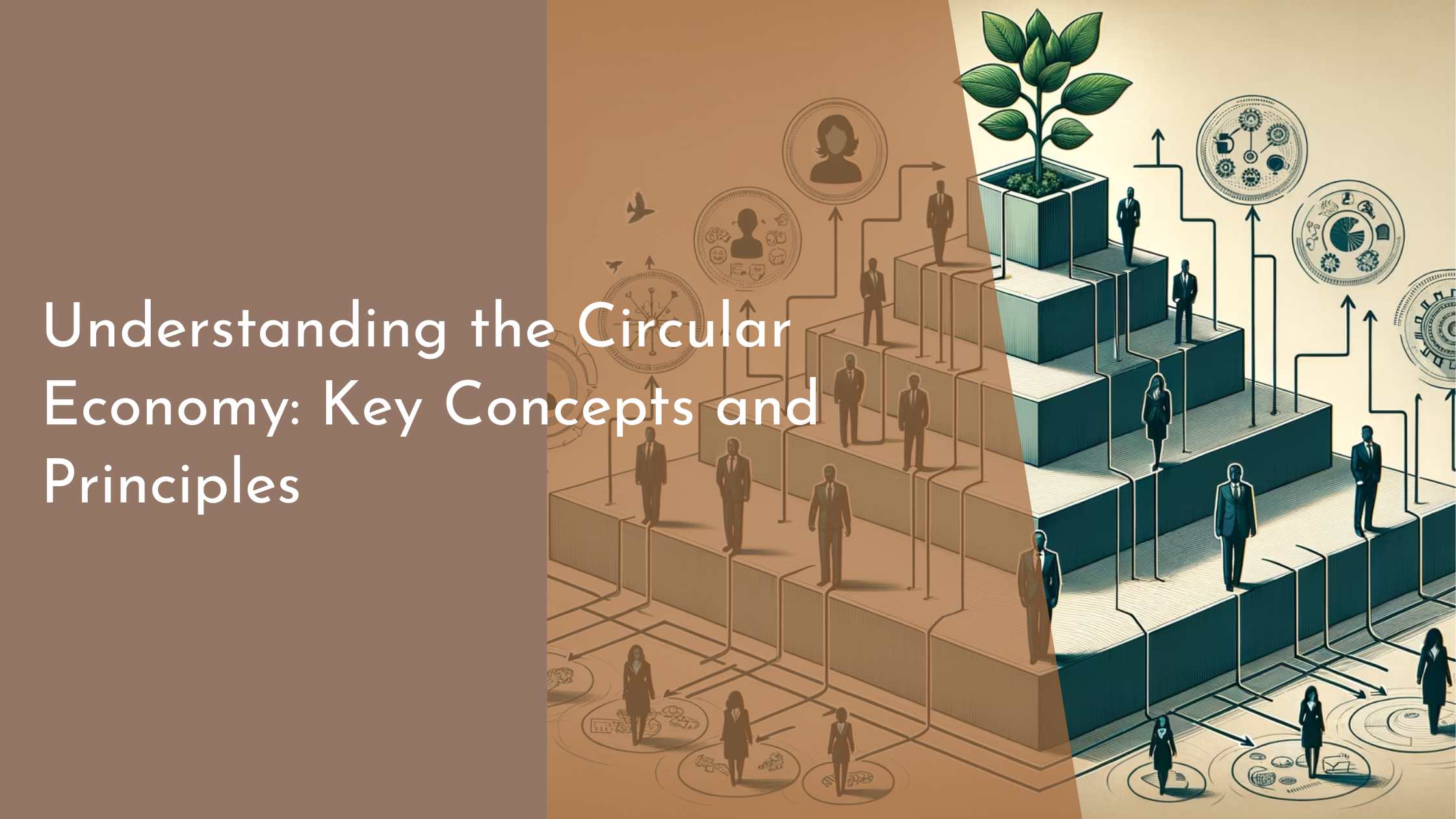Understanding the Circular Economy: Key Concepts and Principles
In an era where sustainability is becoming a crucial part of global conversations, the circular economy emerges as a beacon of innovation and responsibility. It offers a transformative approach to how we produce, consume, and dispose of goods. Unlike the traditional linear economy that follows a “take-make-dispose” model, the circular economy aims to close the loop, creating a system where waste is minimized, and resources are reused, recycled, and regenerated. This article delves into the essentials of the circular economy, exploring its key concepts, guiding principles, and the promising future it holds for businesses and communities worldwide.
The Basics of the Circular Economy Explained
The circular economy is fundamentally a shift away from the linear model of production and consumption. Instead of producing goods to be used and then discarded, the circular economy seeks to create a closed-loop system where resource input, waste, emissions, and energy usage are minimized. This innovative approach prioritizes keeping products, materials, and components at their highest utility and value at all times. It encourages the designing of products that are durable, repairable, and recyclable, ensuring a longer lifespan and reduced environmental impact.
At its core, the circular economy is about redefining growth. It moves away from focusing merely on economic output and instead emphasizes positive society-wide benefits. By decoupling economic activity from the consumption of finite resources, it seeks to foster a more sustainable environment. The circular economy not only addresses the challenges of resource depletion and waste management but also offers opportunities for new business models, job creation, and economic growth while maintaining ecological balance.
Exploring Key Concepts and Their Importance
One of the foundational concepts of the circular economy is the idea of ‘closed-loop’ systems, which prioritize the cyclical use of resources. This involves redesigning production processes to keep materials in continuous circulation, preventing them from becoming waste. Closed-loop systems are crucial because they can significantly reduce the environmental footprint of manufacturing and encourage efficiency in resource utilization.
Another key concept is ‘design for longevity’, which involves creating products that are built to last. This strategy not only reduces the need for frequent replacements but also supports repair, refurbishing, and remanufacturing. It is an important element because longer-lasting products can significantly decrease the demand for new raw materials, thereby conserving natural resources and reducing environmental pressures.
Principles that Drive the Circular Economy Forward
The circular economy is guided by several key principles, one of which is the elimination of waste and pollution. This principle focuses on designing systems that inherently prevent waste from being created in the first place. By thinking ahead and designing out waste, businesses can create more efficient processes that are easier on the planet. This aligns with the notion that waste is largely a product of inefficient design.
Another principle is keeping products and materials in use. This is achieved through strategies such as reusing, repairing, refurbishing, and recycling. The aim is to extend the lifecycle of products and materials, thereby reducing the need for new resources. It not only promotes sustainability but also encourages innovation in creating products that can be easily disassembled and repurposed. This principle is fundamental in creating a sustainable and regenerative economic model.
The Exciting Future of Circular Economy Practices
The future of circular economy practices is full of promise and potential. As awareness grows and technology advances, more businesses and governments are recognizing the value of adopting circular principles. The integration of digital technologies, such as the Internet of Things (IoT) and blockchain, is playing a pivotal role in facilitating circular practices. These technologies enable better tracking of materials and products throughout their lifecycle, enhancing transparency and efficiency.
In the coming years, we can expect to see a broader adoption of circular initiatives across industries. From fashion to electronics, businesses are exploring new ways to create value without depleting natural resources. The circular economy’s focus on sustainability and innovation positions it as a key component in addressing climate change and fostering economic resilience. As these practices continue to evolve, they offer a pathway to a more sustainable future where economic growth is harmonized with environmental stewardship.
As the world grapples with pressing environmental challenges, the circular economy stands out as a visionary approach that aligns economic activities with ecological integrity. By embracing its key concepts and principles, we can build a future where resources are used wisely and waste is drastically reduced. The circular economy is not just an economic model; it’s a new way of thinking that has the potential to revolutionize industries and improve our quality of life. As we collectively move towards a more sustainable paradigm, the circular economy offers hope and a roadmap for creating a thriving planet and society for generations to come.

